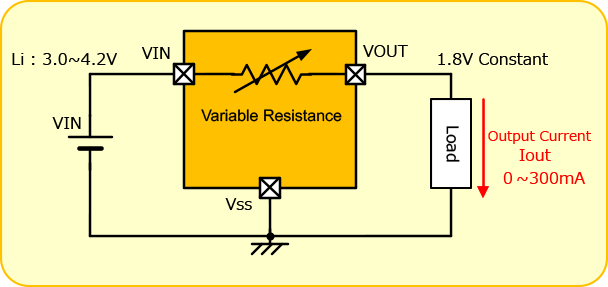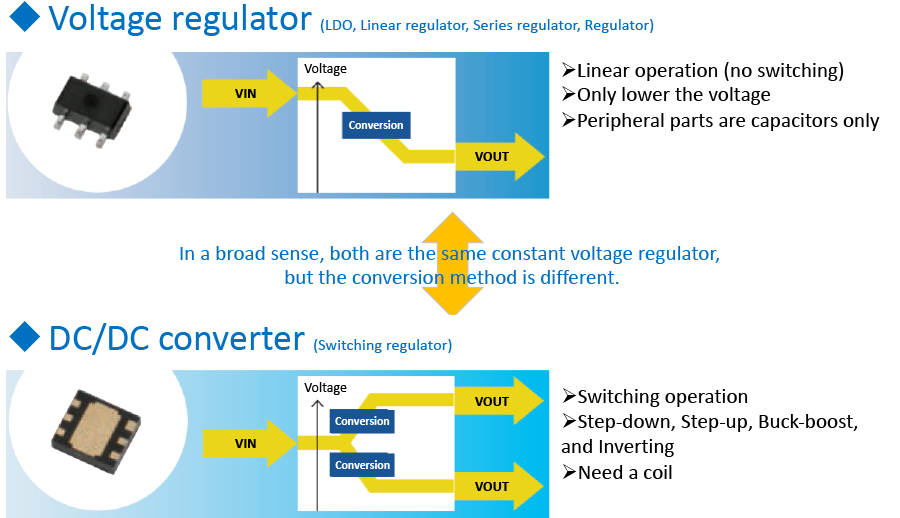What is a voltage regulator?
A power supply IC that produces a constant output voltage in response to the input voltage, output current, and load resistance is called a voltage regulator. This page explains linear voltage regulators that do not perform switching operations.
Many names are used for voltage regulators, such as linear regulator, series regulator, voltage regulator (VR), and low dropout (LDO).
Using a voltage regulator makes it possible to produce a constant output voltage from various input sources with differing input voltages (Ex: 12V power supply, dry cell batteries, and lithium secondary batteries).
Further, a constant output voltage can be applied even if the output current is changed. This characteristic is used to create more stable power supply lines and is the most general device that is used.
In the following example, the lithium-ion secondary battery voltage fluctuates between 3.0V and 4.2V, but the output voltage is maintained at a constant 1.8V.
Further, a constant 1.8V is output even when the output current varies between 0mA and 300mA.

Types of direct current to direct current (DC-DC) converter power supply ICs
In addition to linear type voltage regulators, “DC/DC converters” are also used as switching voltage regulators.
These are also called switching regulators, and they are power supply ICs that regulate to maintain the set output voltage by controlling the FET on/off time.
They can not only reduce the voltage from 5V to 3V (step down) like a voltage regulator, but can also perform step up, such as from 3V to 5V.
